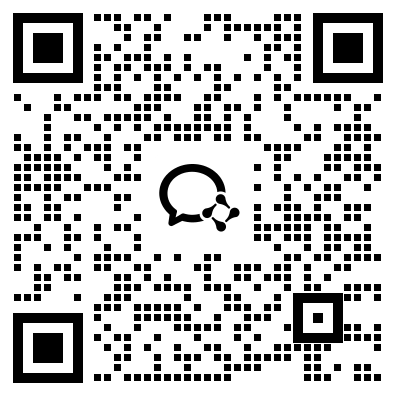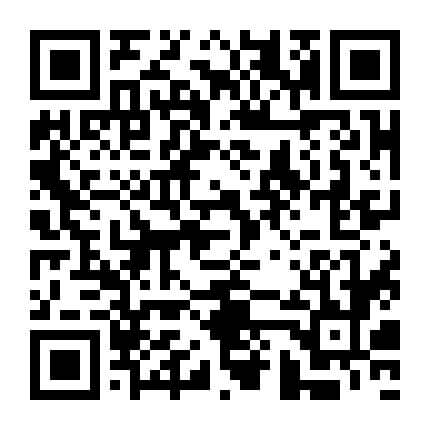考研201英语(一)在线题库每日一练(一百一十三)
摘要:以下是希赛网给大家分享考研201英语(一)在线题库每日一练,希望通过刷题可以帮助大家巩固重要知识点,对知识点查漏补缺,祝愿大家能顺利通过考试!
本文提供考研201英语(一)在线题库每日一练,以下为具体内容
1、In 1924 America's National Research Council sent two engineers to supervise a series of industrial experiments at a large telephone-parts factory called the Hawthorne Plant near Chicago. It hoped they would learn how stop-floor lighting (1)workers' productivity. Instead, the studies ended (2) giving their name to the "Hawthorne effect", the extremely influential idea that the very (3) to being experimented upon changed subjects' behavior. The idea arose because of the behavior of the women in the (4) Hawthorne plant. According to (5) of the experiments, their hourly output rose when lighting was increased, but also when it was dimmed. It did not (6) what was done in the experiment; (7)something was changed, productivity rose. A(n) (8) that they were being experimented upon seemed to be (9) to alter workers' behavior (10) itself. After several decades, the same data were (11) to econometric the analysis. Hawthorne experiments has another surprise in store (12) the descriptions on record, no systematic (13) was found that levels of productivity were related to changes in lighting. It turns out that peculiar way of conducting the experiments may have led to (14) interpretation of what happened. (15), lighting was always changed on a Sunday. When work started again on Monday, output (16) rose compared with the previous Saturday and (17) to rise for the next couple of days. (18), a comparison with data for weeks when there was no experimentation showed that output always went up on Monday, workers (19) to be diligent for the first few days of the week in any case, before (20) a plateau and then slackening off. This suggests that the alleged "Hawthorne effect" is hard to pin down.
问题1
A、affected
B、achieved
C、extracted
D、restored
问题2
A、at
B、up
C、with
D、off
问题3
A、truth
B、sight
C、act
D、proof
问题4
A、controversial
B、perplexing
C、mischievous
D、ambiguous
问题5
A、requirements
B、explanations
C、accounts
D、assessments
问题6
A、conclude
B、matter
C、indicate
D、work
问题7
A、as far as
B、for fear that
C、in case that
D、so long as
问题8
A、awareness
B、expectation
C、sentiment
D、illusion
问题9
A、suitable
B、excessive
C、enough
D、abundant
问题10
A、about
B、for
C、on
D、by
问题11
A、compared
B、shown
C、subjected
D、conveyed
问题12
A、contrary to
B、consistent with
C、parallel with
D、peculiar to
问题13
A、evidence
B、guidance
C、implication
D、source
问题14
A、disputable
B、enlightening
C、reliable
D、misleading
问题15
A、In contrast
B、For example
C、In consequence
D、As usual
问题16
A、duly
B、accidentally
C、unpredictably
D、suddenly
问题17
A、failed
B、ceased
C、started
D、continued
问题18
A、Therefore
B、Furthermore
C、However
D、Meanwhile
问题19
A、attempted
B、tended
C、chose
D、intended
问题20
A、breaking
B、climbing
C、surpassing
D、hitting
2、Over the past decade, thousands of patents have been granted for what are called business methods. Amazon.com received one for its “one-click” online payment system. Merrill Lynch got legal protection for an asset allocation strategy. One inventor patented a technique for lifting a box.Now the nation's top patent court appears completely ready to scale back on business-method patents, which have been controversial ever since they were first authorized 10 years ago. In a move that has intellectual-property lawyers abuzz, the U.S. Court of Appeals for the Federal Circuit said it would use a particular case to conduct a broad review of business-method patents. In re Bilski, as the case is known , is “a very big deal”, says Dennis D. Crouch of the University of Missouri School of Law. It “has the potential to eliminate an entire class of patents.”Curbs on business-method claims would be a dramatic about-face, because it was the Federal Circuit itself that introduced such patents with its 1998 decision in the so-called State Street Bank case, approving a patent on a way of pooling mutual-fund assets. That ruling produced an explosion in business-method patent filings, initially by emerging Internet companies trying to stake out exclusive rights to specific types of online transactions. Later, more established companies raced to add such patents to their files, if only as a defensive move against rivals that might beat them to the punch. In 2005, IBM noted in a court filing that it had been issued more than 300 business-method patents, despite the fact that it questioned the legal basis for granting them. Similarly, some Wall Street investment firms armed themselves with patents for financial products, even as they took positions in court cases opposing the practice.The Bilski case involves a claimed patent on a method for hedging risk in the energy market. The Federal Circuit issued an unusual order stating that the case would be heard by all 12 of the court's judges, rather than a typical panel of three, and that one issue it wants to evaluate is whether it should “reconsider” its State Street Bank ruling.The Federal Circuit's action comes in the wake of a series of recent decisions by the Supreme Court that has narrowed the scope of protections for patent holders. Last April, for example, the justices signaled that too many patents were being upheld for “inventions” that are obvious. The judges on the Federal Circuit are “reacting to the anti-patent trend at the Supreme Court”, says Harold C. Wegner, a patent attorney and professor at George Washington University Law School.1.Business-method patents have recently aroused concern because of( ). 2.Which of the following is true of the Bilski case?3.The word “about-face” (Line 1, Para 3) most probably means ( ). 4.We learn from the last two paragraphs that business-method patents ( ). 5.Which of the following would be the subject of the text?
问题1
A、their limited value to businesses
B、their connection with asset allocation
C、the possible restriction on their granting
D、the controversy over their authorization
问题2
A、Its ruling complies with the court decisions.
B、It involves a very big business transaction.
C、It has been dismissed by the Federal Circuit.
D、It may change the legal practices in the U.S.
问题3
A、loss of good will
B、increase of hostility
C、change of attitude
D、enhancement of dignity
问题4
A、are immune to legal challenges
B、are often unnecessarily issued
C、lower the esteem for patent holders
D、increase the incidence of risks
问题5
A、A looming threat to business-method patents.
B、Protection for business-method patent holders.
C、A legal case regarding business-method patents.
D、A prevailing trend against business-method patents.
3、Ancient Greek philosopher Aristotle viewed laughter as “a bodily exercise precious to health.” But(1)some claims to the contrary, laughing probably has little influence on physical fitness. Laughter does (2)short-term changes in the function of the heart and its blood vessels, (3) heart rate and oxygen consumption. But because hard laughter is difficult to (4), a good laugh is unlikely to have (5) benefits the way, say, walking or jogging does. (6), instead of straining muscles to build them, as exercise does, laughter apparently accomplishes the (7), studies dating back to the 1930's indicate that laughter (8) muscles, decreasing muscle tone for up to 45 minutes after the laugh dies down. Such bodily reaction might conceivably help (9) the effects of psychological stress. Anyway, the act of laughing probably does produce other types of (10) feedback, that improve an individual's emotional state. (11) one classical theory of emotion, our feelings are partially rooted (12) physical reactions. It was argued at the end of the 19th century that humans do not cry (13) they are sad but they become sad when the tears begin to flow. Although sadness also (14) tears, evidence suggests that emotions can flow (15) muscular responses. In an experiment published in 1988, social psychologist Fritz Strack of the University of Würzburg in Germany asked volunteers to (16) a pen either with their teeth—thereby creating an artificial smile—or with their lips, which would produce a(n)(17) expression. Those forced to exercise their smiling muscles(18) more enthusiastically to funny cartoons than did those whose months were contracted in a frown,(19) that expressions may influence emotions rather than just the other way around. (20), the physical act of laughter could improve mood.
问题1
A、among
B、except
C、despite
D、like
问题2
A、reflect
B、demand
C、indicate
D、produce
问题3
A、stabilizing
B、boosting
C、impairing
D、determining
问题4
A、transmit
B、sustain
C、evaluate
D、observe
问题5
A、measurable
B、manageable
C、affordable
D、renewable
问题6
A、In turn
B、In fact
C、In addition
D、In brief
问题7
A、opposite
B、impossible
C、average
D、expected
问题8
A、hardens
B、weakens
C、tightens
D、relaxes
问题9
A、aggravate
B、generate
C、moderate
D、enhance
问题10
A、physical
B、mental
C、subconscious
D、internal
问题11
A、Except for
B、According to
C、Due to
D、As for
问题12
A、with
B、on
C、in
D、at
问题13
A、unless
B、until
C、if
D、because
问题14
A、exhausts
B、follows
C、precedes
D、suppresses
问题15
A、into
B、from
C、towards
D、beyond
问题16
A、fetch
B、bite
C、pick
D、hold
问题17
A、disappointed
B、excited
C、joyful
D、indifferent
问题18
A、adapted
B、catered
C、turned
D、reacted
问题19
A、suggesting
B、requiring
C、mentioning
D、supposing
问题20
A、Eventually
B、Consequently
C、Similarly
D、Conversely
4、It's no surprise that Jennifer Senior's insightful, provocative magazine cover story, “I love My Children, I Hate My Life,” is arousing much chatter—nothing gets people talking like the suggestion that child rearing is anything less than a completely fulfilling, life-enriching experience. Rather than concluding that children make parents either happy or miserable, Senior suggests we need to redefine happiness: instead of thinking of it as something that can be measured by moment-to-moment joy, we should consider being happy as a past-tense condition. Even though the day-to-day experience of raising kids can be soul-crushingly hard, Senior writes that “the very things that in the moment dampen our moods can later be sources of intense gratification and delight.” The magazine cover showing an attractive mother holding a cute baby is hardly the only Madonna-and-child image on newsstands this week. There are also stories about newly adoptive—and newly single—mom Sandra Bullock, as well as the usual “Jennifer Aniston is pregnant” news. Practically every week features at least one celebrity mom, or mom-to-be, smiling on the newsstands. In a society that so persistently celebrates procreation, is it any wonder that admitting you regret having children is equivalent to admitting you support kitten-killing? It doesn't seem quite fair, then, to compare the regrets of parents to the regrets of the children. Unhappy parents rarely are provoked to wonder if they shouldn't have had kids, but unhappy childless folks are bothered with the message that children are the single most important thing in the world: obviously their misery must be a direct result of the gaping baby-size holes in their lives. Of course, the image of parenthood that celebrity magazines like Us Weekly and People present is hugely unrealistic, especially when the parents are single mothers like Bullock. According to several studies concluding that parents are less happy than childless couples, single parents are the least happy of all. No shock there, considering how much work it is to raise a kid without a partner to lean on; yet to hear Sandra and Britney tell it, raising a kid on their “own” (read: with round-the-clock help) is a piece of cake. It's hard to imagine that many people are dumb enough to want children just because Reese and Angelina make it look so glamorous: most adults understand that a baby is not a haircut. But it's interesting to wonder if the images we see every week of stress-free, happiness-enhancing parenthood aren't in some small, subconscious way contributing to our own dissatisfactions with the actual experience, in the same way that a small part of us hoped getting “the Rachel” might make us look just a little bit like Jennifer Aniston. 1.Jennifer Senior suggests in her article that raising a child can bring ( ). 2.We learn from Paragraph 2 that( ).3.It is suggested in Paragraph 3 that childless folks ( ). 4.According to Paragraph 4, the message conveyed by celebrity magazines is ( ). 5.Which of the following can be inferred from the last paragraph?
问题1
A、temporary delight
B、enjoyment in progress
C、happiness in retrospect
D、lasting reward
问题2
A、celebrity moms are a permanent source for gossip
B、single mothers with babies deserve greater attention
C、news about pregnant celebrities is entertaining
D、having children is highly valued by the public
问题3
A、are constantly exposed to criticism
B、are largely ignored by the media
C、fail to fulfill their social responsibilities
D、are less likely to be satisfied with their life
问题4
A、soothing
B、ambiguous
C、compensatory
D、misleading
问题5
A、Having children contributes little to the glamour of celebrity moms.
B、Celebrity moms have influenced our attitude towards child rearing.
C、Having children intensifies our dissatisfaction with life.
D、We sometimes neglect the happiness from child rearing.
5、In the 2006 film version of The Devil Wears Prada, Miranda Priestly, played by Meryl Streep, scold her unattractive assistant for imagining that high fashion doesn't affect her. Priestly explains how the deep blue color of the assistant's sweater descended over the years from fashion shows to department stores and to the bargain bin in which the poor girl doubtless found her garment.This top-down conception of the fashion business couldn't be more out of date or at odds with feverish world described in Overdressed, Elizabeth Cline's three-year indictment of “fast fashion”. In the last decades or so, advances in technology have allowed mass-market labels such as Zara, H&M, and Uniqlo to react to trends more quickly and anticipate demand more precisely. Quicker turnarounds mean less wasted inventory, more frequent releases, and more profit. Those labels encourage style-conscious consumers to see clothes as disposable—meant to last only a wash or two, although they don't advertise that—and to renew their wardrobe every few weeks. By offering on-trend items at dirt-cheap prices, Cline argues, these brands have hijacked fashion cycles, shaking an industry long accustomed to a seasonal pace.The victims of this revolution, of course, are not limited to designers. For H&M to offer a $5.95 knit miniskirt in all its 2,300-plus stores around the world, it must rely on low-wage, overseas labor, order in volumes that strain natural resources, and use massive amounts of harmful chemicals.Overdressed is the fashion world's answer to consumer-activist bestsellers like Michael Pollan's The Omnivore’s Dilemma. “Mass-produced clothing, like fast food, fills a hunger and need, yet is non-durable, and wasteful,” Cline argues. Americans, she finds, buy roughly 20 billion garments a year—about 64 items per person—and no matter how much they give away, this excess leads to waste. Towards the end of Overdressed, Cline introduced her ideal, a Brooklyn woman named Sarah Kate Beaumont, who since 2008 has made all of her own clothes—and beautifully. But as Cline is the first to note, it took Beaumont decades to perfect her craft; her example can't be knocked off.Though several fast-fashion companies have made efforts to curb their impact on labor and the environment—including H&M, with its green Conscious Collection Line—Cline believes lasting change can only be effected by the customer. She exhibits the idealism common to many advocates of sustainability, be it in food or in energy. Vanity is a constant; people will only start shopping more sustainably when they can't afford not to.1.Priestly criticizes her assistant for her( ).2.According to Cline, mass-market labels urge consumers to ( ). 3.The word “indictment” (Line 3, Para.2) is closest in meaning to ( ). 4.Which of the following can be inferred from the last paragraph? 5.What is the subject of the text?
问题1
A、poor bargaining skill
B、insensitivity to fashion
C、obsession with high fashion
D、lack of imagination
问题2
A、combat unnecessary waste
B、shut out the feverish fashion world
C、resist the influence of advertisements
D、shop for their garments more frequently
问题3
A、accusation
B、enthusiasm
C、indifference
D、tolerance
问题4
A、Vanity has more often been found in idealists.
B、The fast-fashion industry ignores sustainability.
C、People are more interested in unaffordable garments.
D、Pricing is vital to environment-friendly purchasing.
问题5
A、Satire on an extravagant lifestyle.
B、Challenge to a high-fashion myth.
C、Criticism of the fast-fashion industry.
D、Exposure of a mass-market secret.
点击查看【完整】试卷>>延伸阅读
- 历年考研国家分数线汇总(更新至2025年)
- 2025考研国家分数线正式发布
- 2025全国各省考研初试成绩公布时间汇总(更新中)
- 2025年考研成绩公布时间及查询流程
- 2025年全国硕士研究生招生考试(初试)温馨提示汇总
- 2025年全国硕士研究生招生考试考场规则

考研微信公众号

考研备考资料免费领取
去领取
- 1
- 1
- 6
 专注在线职业教育24年
专注在线职业教育24年









 扫描二维码
扫描二维码
 扫描二维码
扫描二维码








